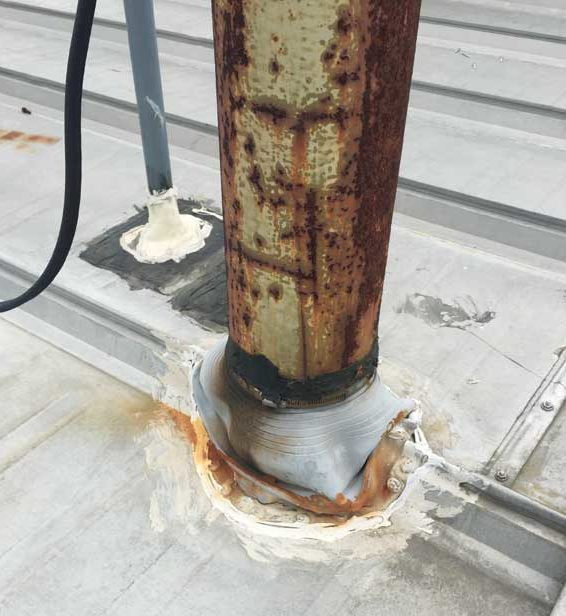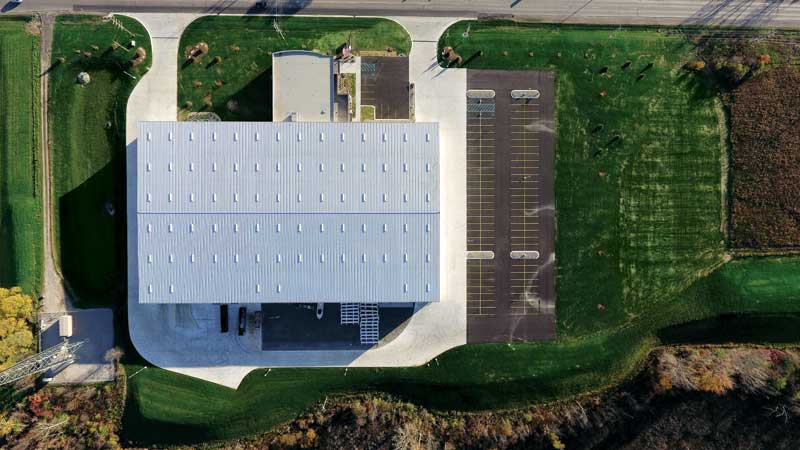Penetrating a Metal Roof: Specifying leak-free assemblies

General best practices
Regardless of why a roof needs to be penetrated, there are critical steps to execute with the manufacturer, prior to installation, to ensure quality work. Any time a standing-seam roof is penetrated, its weathertight warranty is in jeopardy. With some manufacturers offering coverage of up to 25 years, this is a considerable risk.
Adhering to these best practices is an important first step in not only protecting the building owner from roof leaks, but also ensuring the validity of the manufacturer’s warranty. When specifying a standing-seam metal roof, this author strongly suggests including these five steps:
1. Use only curbs fastened with an internal flange to significantly reduce the number of exposed roof penetrations.
Patch-style curbs can require more than 100 fasteners each. Considering there may be hundreds of curbs installed on a roof, the result is tens of thousands of penetrations and potential leaks. Often, even clean installation cannot overcome poor curb design in maintaining a weathertight roof.
2. Metal roof curbs must be supported by secondary structural members to prevent the panels from deflecting.
This direction is often overlooked, and the result is ponding water where fasteners connect the curb to the panel, which can cause separation. Once ponding occurs, leaks are not far behind.
3. Source any methods and components for penetrating the standing-seam metal roof directly from the manufacturer or per the manufacturer’s instructions.
Failure to include this instruction may result in the contractor opting for the lowest-cost solution, which jeopardizes the warranty. In fact, unapproved modifications and penetrations are the most frequent reason for nullification of standing-seam roof warranties.

4. Confirm all professionals are certified and skilled at installing metal roofs, as there are distinct differences between metal and single-ply roofs.
One should never assume the trades are interchangeable.
5. Inspections by a qualified consultant or by the manufacturer are critical.
Whether there is a warranty or not, this is always a good idea to ensure the roof and penetrations were properly addressed.
By thoughtfully specifying how these roofs are penetrated, design/engineering professionals can help ensure building owners realize the full value of their roof systems. The keys to helping maintain a weathertight assembly and a valid warranty are simple. It comes down to minimizing the number of exposed fasteners as well as ensuring the methods and materials are supplied by the manufacturer and installed by the roofing contractor.
Millions of square feet of standing-seam metal roofs across the globe are long-standing and leak-free. Standing-seam metal roofs offer significant benefits over other options, especially in terms of minimizing maintenance and maximizing lifespan. From warehouses to data centers, these roofs are trusted to provide weathertight protection for critical infrastructure and inventory.
Rodger Russ is the North American sales manager for the roof division of Butler Manufacturing. He has more than 30 years of experience since starting in the sheet metal trade in Chicago. Russ has worked for multiple manufacturers in various roles, including product development, training, product and sales management, and consulting. In his role with Butler, he focuses on applying new solutions for the retrofit segment of the metal roofing market. Russ can be reached at editorial@butlermfg.com.



